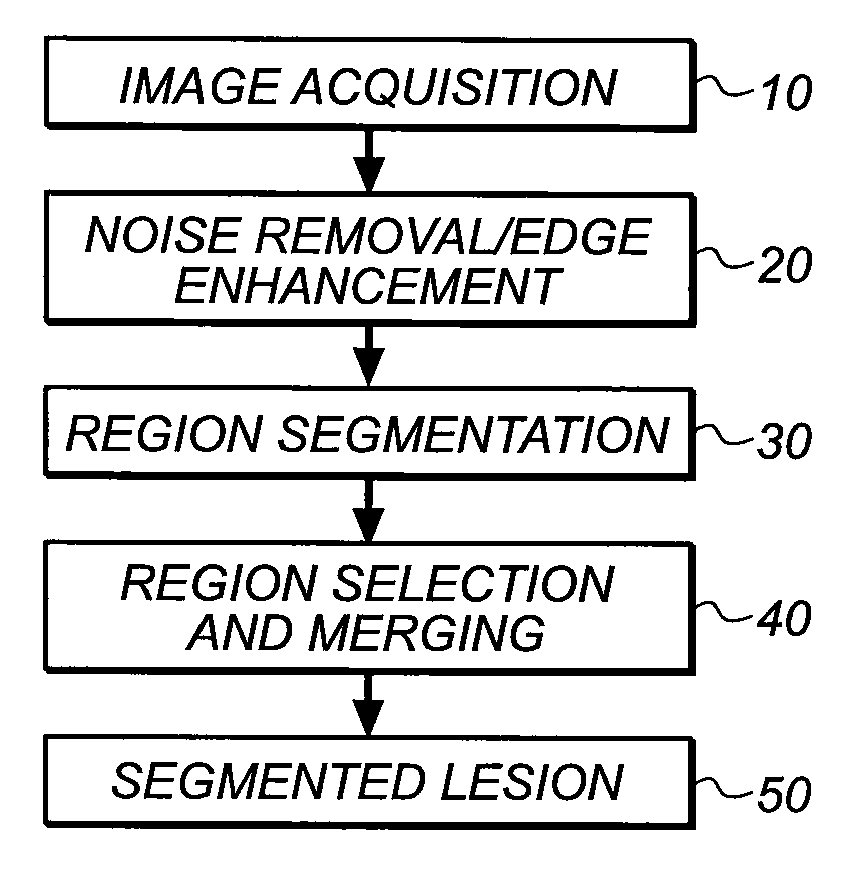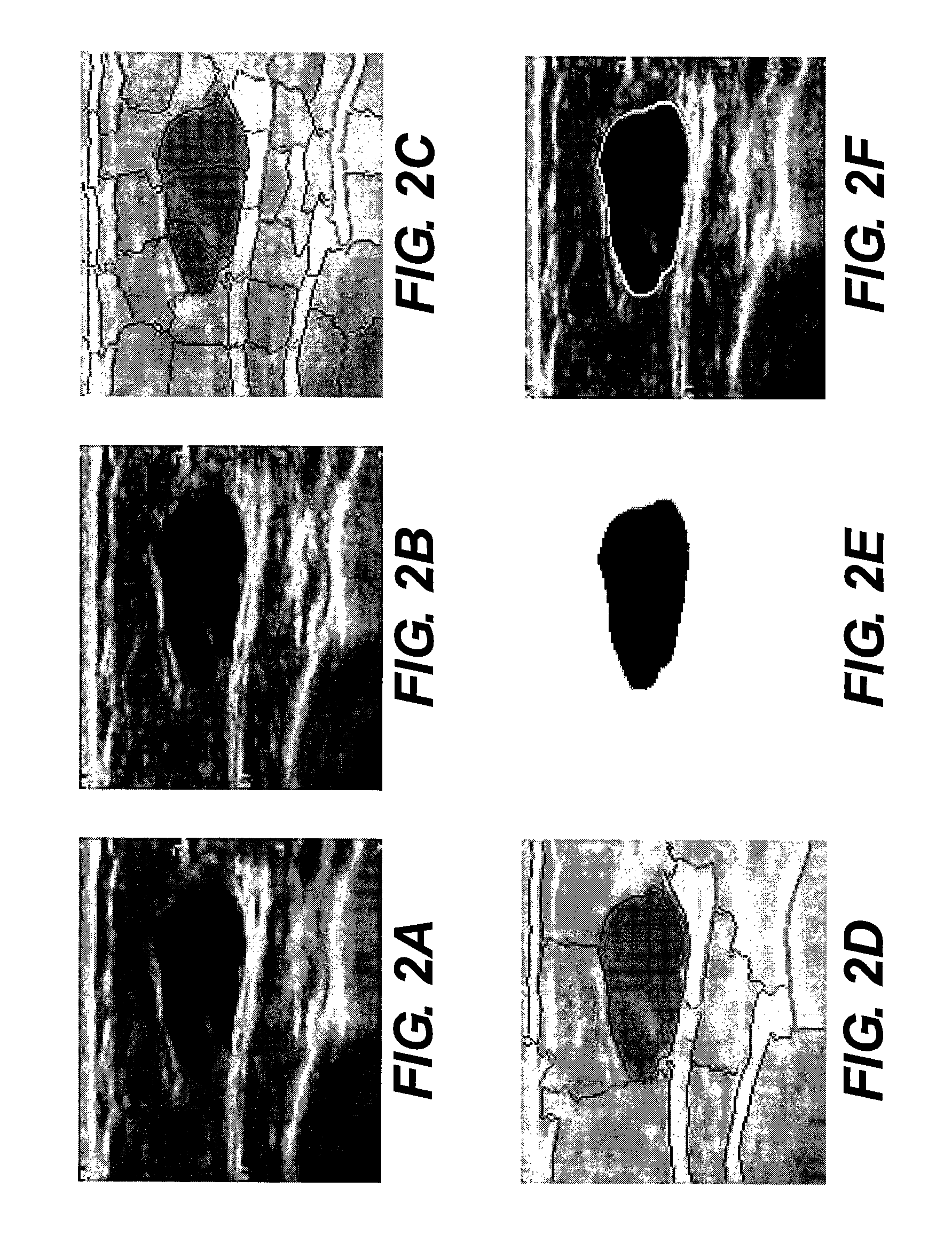Segmentation of lesions in ultrasound images
a technology of segmentation and ultrasound, applied in the field of digital image processing of ultrasound images, can solve the problems of common cause of cancer death, misclassification of lesions in everyday clinical practice, and segmentation of lesions from surrounding tissues
- Summary
- Abstract
- Description
- Claims
- Application Information
AI Technical Summary
Benefits of technology
Problems solved by technology
Method used
Image
Examples
Embodiment Construction
[0042]The following is a detailed description of the preferred embodiments of the invention, reference being made to the drawings in which the same reference numerals identify the same elements of structure in each of the several figures.
[0043]FIG. 1 shows a flowchart generally illustrating the method in accordance with the present invention. At step 10, an input ultrasound image is accessed / acquired / provided for analysis. A nonlinear filtering is applied on the input ultrasound image to remove the noise while preserving the edge (step 20). At step 30, the region is segmented. Region selection and merging is accomplished at step 40, and the lesion is segmented at step 50.
[0044]More particularly, once the digital ultrasound image of anatomical tissue is accessed, an anisotropic diffusion filter is used to remove noise from the image. Then, spatially contiguous pixels of the digital ultrasound image are segmented into a plurality of regions in accordance with substantially similar int...
PUM
 Login to View More
Login to View More Abstract
Description
Claims
Application Information
 Login to View More
Login to View More - R&D
- Intellectual Property
- Life Sciences
- Materials
- Tech Scout
- Unparalleled Data Quality
- Higher Quality Content
- 60% Fewer Hallucinations
Browse by: Latest US Patents, China's latest patents, Technical Efficacy Thesaurus, Application Domain, Technology Topic, Popular Technical Reports.
© 2025 PatSnap. All rights reserved.Legal|Privacy policy|Modern Slavery Act Transparency Statement|Sitemap|About US| Contact US: help@patsnap.com



